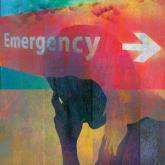Article

Differentiating serotonin syndrome and neuroleptic malignant syndrome
- Author:
- Andia H. Turner, MD
- Jessica J. Kim, MD
- Robert M. McCarron, DO
Symptoms can overlap, but accurate diagnosis is critical because treatments are distinct.
Article

How to diagnose and manage hypertension in a psychiatric patient
- Author:
- Robert M. McCarron, DO
- Craig R. Keenan, MD
- Banoo Lashai, MD
- John C. Onate, MD
Hypertension is a widespread, under-recognized, and undertreated cause of morbidity and mortality in the United States and is associated with...
News

Head pain and psychiatric illness: Applying the biopsychosocial model to care
- Author:
- Amir Ramezani, PhD
- Robert M. McCarron, DO
- Mehrbanoo Lashai, MD
Integrating neurologic, cognitive, and psychological aspects of this condition enhances clinical assessment
News

Rx: Treating chronic medical vulnerability in the mentally ill
- Author:
- Robert M. McCarron, DO
As a physician who specializes in psychiatry, internal medicine, and pain medicine, I work with patients to treat such common disorders as...
News

Cannabinoid hyperemesis syndrome: A result of chronic, heavy Cannabis use
- Author:
- Jie Chen, MD
- Robert M. McCarron, DO
Hot showers, marijuana cessation relieve nausea and vomiting
News
How to manage medical complications of the 5 most abused substances
- Author:
- Raheel Khan, DO
- Lenton Joby Morrow, MD
- Robert M. McCarron, DO
Monitor for symptoms and lab findings that indicate risk of serious consequences
News
Prescribing for urinary tract infection: Avoid fluoroquinolones?
- Author:
- Robert M. McCarron, DO
- Jane P. Gagliardi, MD
News
Protect patients’ bones when prescribing
- Author:
- Robert M. McCarron, DO
News
Diabetes screening: Which patients, what tests, and how often?
- Author:
- Robert M. McCarron, DO
News
Subclinical hypothyroidism: Merely monitor or time to treat?
- Author:
- Robert M. McCarron, DO
News
Immunization update: How to protect your at-risk patients
- Author:
- Robert M. McCarron, DO
News
Screening for Chlamydia? New advice for sexually active women
- Author:
- Robert M. McCarron, DO
News
What’s that rash? Recognize community-acquired MRSA
- Author:
- Robert M. McCarron, DO
News
Acute MI risk? Protecting your patients’ heart health
- Author:
- Robert M. McCarron, DO
Follow guidelines for gauging key risk factors.
